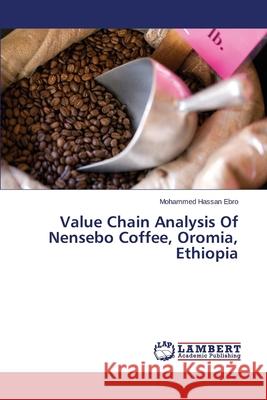Value Chain Analysis of Nensebo Coffee, Oromia, Ethiopia » książka
Value Chain Analysis of Nensebo Coffee, Oromia, Ethiopia
ISBN-13: 9783659104060 / Angielski / Miękka / 2013 / 112 str.
This study conducted to analyse coffee value chain in Nensebo district of West Arsi zone. Nensebo district offers great potential forest coffee, largely untapped due to poor harvesting and post-harvest management and producers have no incentives to improve quality of coffee products through proper management practices. The study was to identify coffee value chains; describe the value additions of different actors in the coffee value chain and linkage of each actor, their functions and chain relationships. Examine marketing margins and performance along the coffee value chains in terms of income and social benefits, and examine factors that affect marketable surplus; and identify key constraints and opportunities in the coffee value chains. The study can generate valuable information on value chain analysis of coffee marketing would assist policy makers to make relevant decision to intervene in the coffee value chain and designing of appropriate policies and strategies development. Government and non-governmental organizations that are intervening though their programs in the development of coffee sub-sector would also benefit from the results of this study. The findings are useful
This study conducted to analyse coffee value chain in Nensebo district of West Arsi zone. Nensebo district offers great potential forest coffee, largely untapped due to poor harvesting and post-harvest management and producers have no incentives to improve quality of coffee products through proper management practices. The study was to identify coffee value chains; describe the value additions of different actors in the coffee value chain and linkage of each actor, their functions and chain relationships. Examine marketing margins and performance along the coffee value chains in terms of income and social benefits, and examine factors that affect marketable surplus; and identify key constraints and opportunities in the coffee value chains. The study can generate valuable information on value chain analysis of coffee marketing would assist policy makers to make relevant decision to intervene in the coffee value chain and designing of appropriate policies and strategies development. Government and non-governmental organizations that are intervening though their programs in the development of coffee sub-sector would also benefit from the results of this study. The findings are useful











